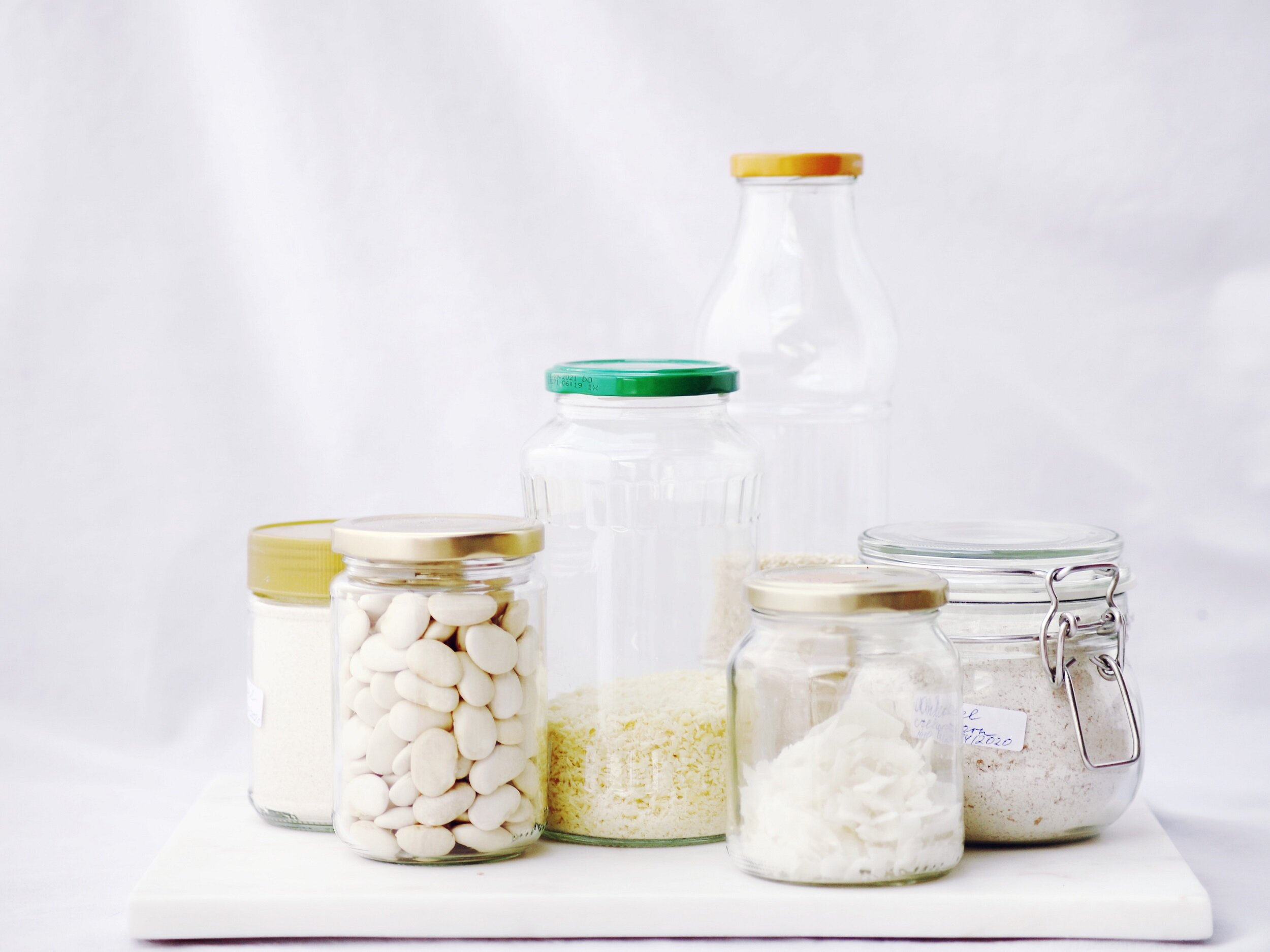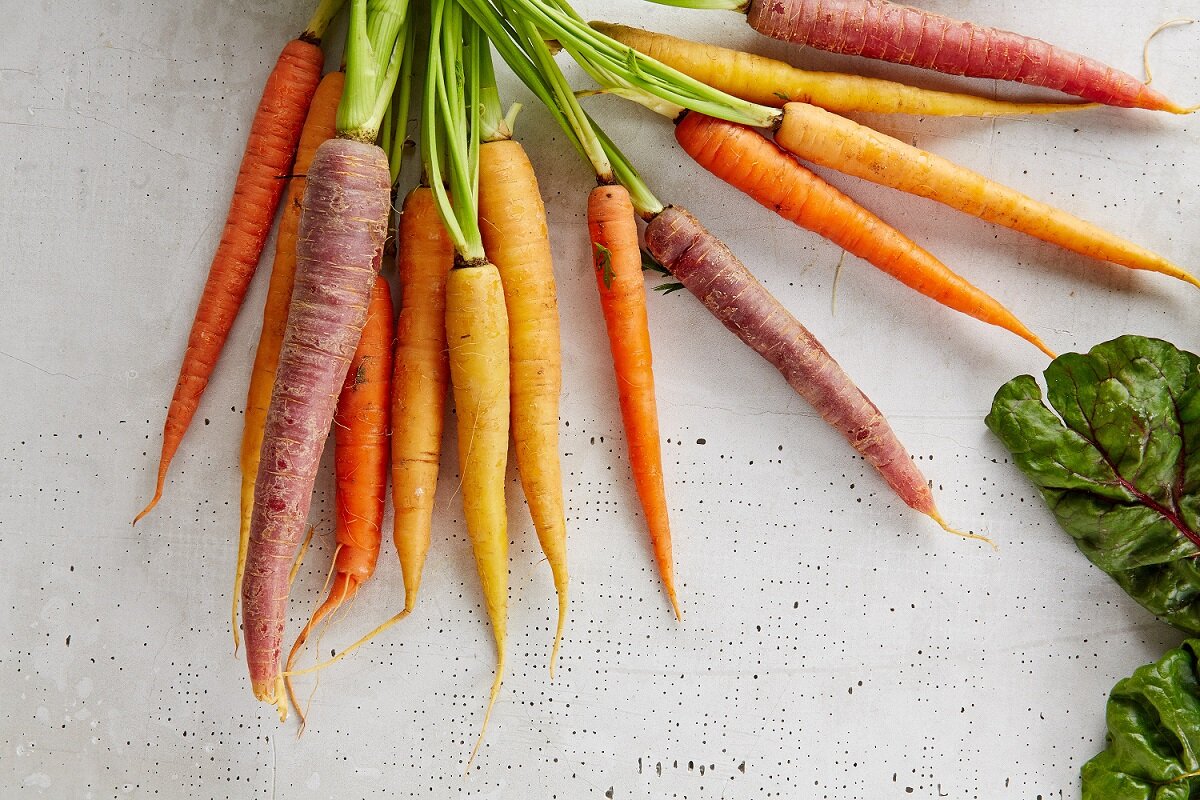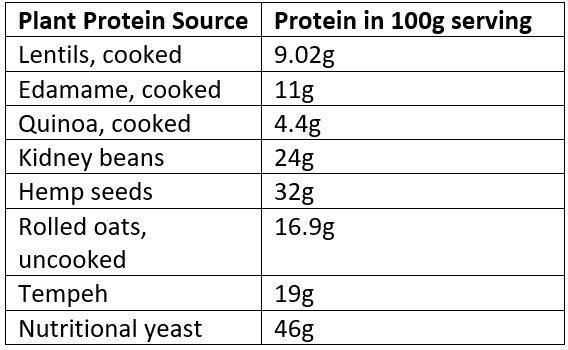The Little-Known Truth About Plant-Based Protein
If you’re scratching your head wondering how you can get enough protein on a Whole Food Plant-Based diet, you’re not alone. I had that same question myself a few years ago, and now I get asked about this every week by at least 10 people.
It’s a fair question. There are many misconceptions about protein and what it means to be plant-based, but the truth is that when you really understand this lifestyle and what it entails, you’ll realize that plant-based protein is available in abundance.
From nutritional yeast to hearty grains like quinoa, there is no shortage of high-protein foods for you to savor on a Whole Food Plant-Based diet.
Let’s dive a bit further into what protein really is to get a better understanding of why you need it and where you can find it.
You’ll see that there’s nothing to worry about when it comes to protein!
What Is Protein and Why Do You Need It?
Protein is a macronutrient, just like fat and carbohydrates. These complex molecules play several roles in the body, functioning as antibodies, enzymes, and transport facilitators – and that’s for starters!
In short, protein is crucial for the well-being of your body and your mind.
Amino acids are the building blocks of proteins. When you consume food containing protein, your body breaks down the large molecules into these building blocks and transports various amino acids to the areas where they are needed.
Since each amino acid plays a key role in your body’s functioning, it’s important to make sure you consume a diet that includes all of these building blocks.
Plant-Based Complementary Proteins
Animal foods are considered complete proteins, which means they contain all of the essential amino acids your body can’t manufacture on its own. That’s why so many people associate animal foods with protein.
But guess what? These 9 essential amino acids are also available in plant foods. However, in order to get them all, you need to ensure that your diet contains a variety of plant-based foods.
To get what you need, you have to be aware of what we call “complementary proteins.”
Complementary proteins are protein sources that, when combined, provide your body with all of the 9 essential amino acids.
Here are a few examples of complementary proteins:
Vegetables and grains, nuts, or seeds
Legumes and grains, nuts, or seeds
Beans and nuts or seeds
You don’t need to overthink this. As long as you are eating a Whole Food Plant-Based diet with lots of variety, your body will get what it needs.
Experts used to think that complementary proteins had to be consumed within the same meal to provide benefits, but research has shown that this isn’t quite true.
Your body actually maintains extra supplies of free amino acids, and it will naturally reassemble them as needed – even if you don’t consume them at the same time.
Isn’t the human body amazing? What a precious gift we’ve been given!
How Much Protein Do You Need?
To calculate how much protein you need per day, use a chart to determine your ideal weight in pounds for your height. Multiply this number by four, and then divide it by ten. For example, if your ideal weight is 120 pounds, you would require about 48g of protein per day.
With all the emphasis these days on protein within the fitness and diet spheres, you might be surprised to learn that more people suffer from getting too much protein than too little.
Think about it: animal products, which are packed with protein, are a major component of the Standard American Diet (SAD, in the literal sense). Therefore, getting too little protein is uncommon. In fact, those who consume substantial amounts of meat and dairy tend to get too much of the wrong kinds of protein.
Let me explain…
Whole Food Plant-Based Proteins vs Animal Proteins
Have you ever heard the saying that “all calories are not made equal”? There is some truth to that, and it also applies to protein.
Many plants are high-quality, protein-rich foods that do not cause adverse effects on the body. The same can’t be said for animal proteins, however.
Studies have found that it only takes one meal high in animal protein to double the level of stress hormones coursing through your bloodstream – and this happens within just 30 minutes!
I don’t know about you, but the last thing I need is more stress hormones.
In addition, animal foods are acid-forming, which increases your risk of kidney malfunction. Plant-based protein, on the other hand, is alkalizing.
Put simply, an alkaline body is the ideal state for optimal human health – and plant foods can get you there.
Let’s Expose the Protein Myth Once and for All
If you’re still not convinced that plant proteins are exceptional sources of protein, let’s look at the quantity of protein in 100 grams of animal and plant protein sources.
I avoid tofu and tempeh because I’m managing hypothyroidism. However, these foods are protein-rich options that can be consumed by those who don’t have thyroid issues. Having said that, you should stick to consuming these foods no more than 2 to 3 times per week.
There’s no denying that animal foods contain high levels of protein, but this comparison makes it clear that plant foods are great sources of this macronutrient as well!
On top of that, plant sources come without the adverse side effects of consuming meat, nor do they contain the antibiotics that farmed animals are overloaded with.
Plus, you won’t get more than your body needs to function at its best, unlike with animal foods. Keep in mind that we are looking at 100-gram servings above, and many people consume 2 to 4 times that when eating a burger or steak, for example.
Now that you’re starting to see the light with plant proteins, let’s take a look at some of the vegetables you can add to your meals that will also help to ensure you get the right amount of protein.
High-Protein Vegetables
You should eat a wide variety of nutrient-dense vegetables and other plant foods in your meals to get all the essential amino acids your body requires. These high-protein vegetables are a good starting point:
Green Peas – 8.5 grams per cup
Asparagus – 2.9 grams per cup
Broccoli – 4.3 grams per medium stalk
Spinach, cooked – 5.4 grams per cup
Edamame – 17 grams per cup
Top Three Plant-Based Proteins
If you want to get the best bang for your vegetable buck, here are three proteins to focus on.
1. Hemp seeds
Hemp seeds are a great addition to many meals. They’re easily tossed into salads, smoothies, and oats. Just one tablespoon contains 9.47 gr of protein.
2. Edamame
I’ve touched on it a few times, but edamame really is an incredible source of protein for plant-based eaters. In addition to protein (17 grams per cup), it contains iron, calcium, folate, and fiber.
3. Nutritional Yeast
This power food is one that a lot of people aren’t familiar with – I’m a recent convert myself – but it’s one that offers incredible benefits. A serving of 10 grams (1/3 oz) contains a whopping 4.6 grams of protein (that’s not a mistake!) and is packed with vitamin B12, which is one of the vitamins that plant-based eaters can lack if they’re not careful.
The Verdict on Plant Proteins
Not only is it totally possible to get enough protein through a Whole Food Plant-Based diet, but it is also the healthier option.
Without the adverse effects of diets high in animal-based protein, plant-based proteins are the most nutritious – not to mention most flavorful! – way to go.
Let’s hear from you!
Where do you get your plant protein from? Do you have a daily staple, do you like to mix it up, or are you still navigating the world of plant proteins?
Comment below and let’s get the conversation going!








